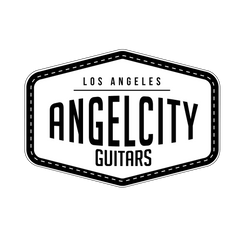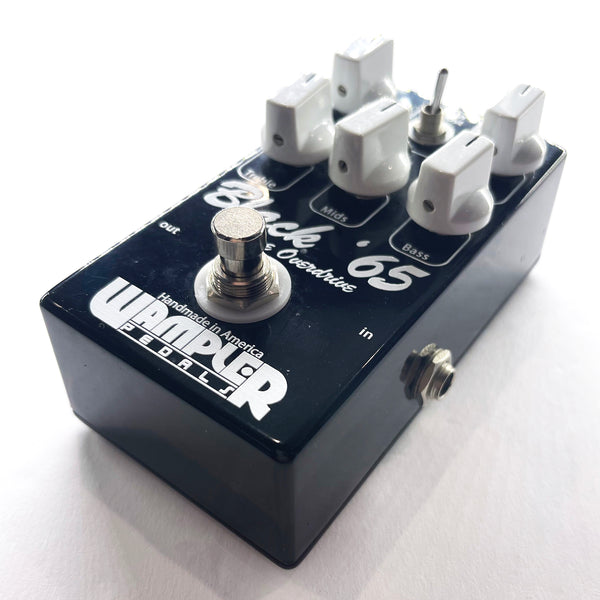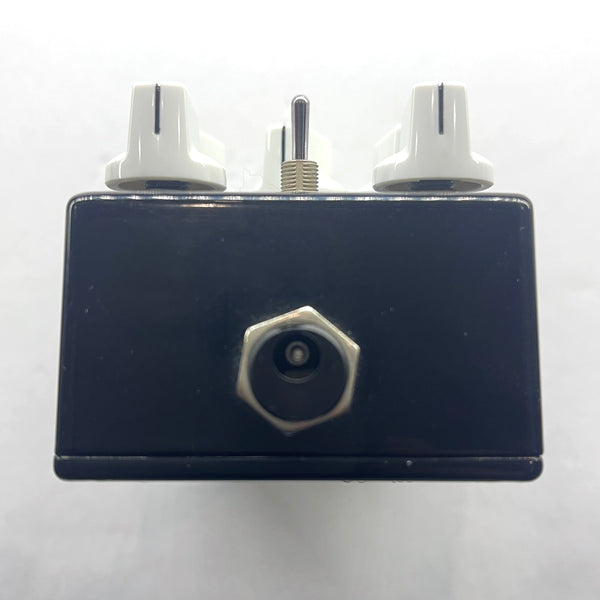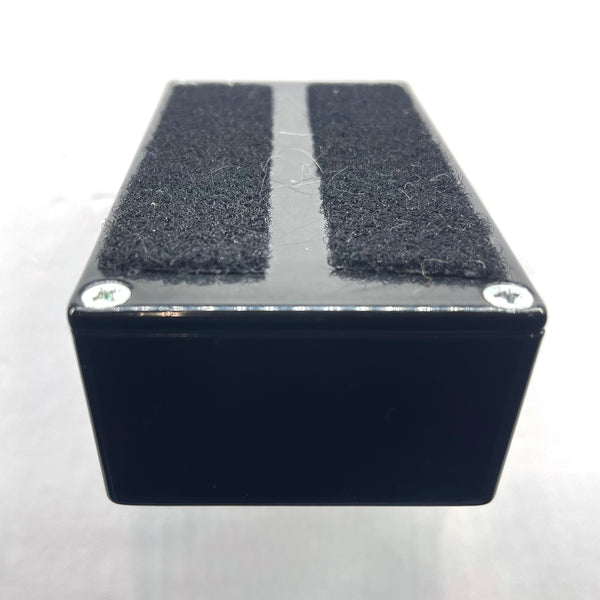Very good condition. Velcro on back. No box.
Black ‘65, Vintage Overdrive
As time has progressed, designs have changed, parts have become unavailable for even the most genuine attempted remake, and it's inarguable that the products rolling off the amp line today from the most well-established makers differ in important ways from their ancestors.
The reissues can sound good, but there's something a little bit magical about the sound of the amps of the '60s that had black control panels, black tolex, and a sound that could sing.
Made famous by featuring on more award-winning recordings than any single musician, the tone of the Black Panel amps was undeniably great!
If you're a guitarist or steel guitarist who wants to capture that sound now, we've got something that we feel is going to be perfect for you.
It just so happens that the sound doesn't stop there. Read on!
To get the most out of your new pedal, you'll want to become very familiar with the controls. The Black '65 OD isn't named after any particular amp precisely because the range of sounds available would make calling it the "BF Dee Lucks" or the "BF Bass Gentleman" or the "BF To-Win" too boxed in. Engineered from the ground up for diversity, the three-band EQ and Gain Switch will allow you to dial in a sound very much like any of the classic amps of the era – and even get into tweed-covered territory (you know what I mean!). And as if that functionality weren't enough, it can act as a "tone shaper;" that is, a pedal that you place at or near the very end of your chain but before the amp, with the gain set very low but the EQ adjusted to give everything the amp-like, great flavor you want from the pedal.
This pedal is no one trick pony. It works very well for giving your "Black Panel" amp (whatever it may be) a cranked-up sound at a lower volume, just as it works very well for giving any amp a serious dose of that classic tone. Experiment and enjoy!
Bypass Switch – A true-bypass footswitch ensures solid, mechanical removal of the circuit when it isn't wanted, meaning you don't lose any tone when the pedal is off.
Volume – This control adjusts the output level of the Black '65. It has a huge range of adjustment, allowing for unity gain or for a real kick-in when you turn it on. How you adjust it is up to you.
Treble – This control adjusts the amount of focus on the highs in the pedal. In conjunction with the other EQ controls, you can have a sound that's more reminsicent of this or that classic Black Panel amp, depending on how much highs you dial in. If you're thinking "siamese" crank the Treble; for a sound more like an old bass amp that guitarists got their hands on and loved, keep it back a little bit but still above noon. If you're after a fancy sound (maybe even a deluxe tone?), roll it back farther. The ability to morph between these different types of sounds continues with all the Black '65 OD's EQ controls.
Mids – This control is pretty fundamental to shaping just what kind of classic amp tone you're after, too. Different amps emphasized the midrange in different ways, whether due to actual circuitry changes, speaker selection, or cabinet type; since the "body" of the guitar's sound is in the midrange, being able to adjust it this substantially is absolutely necessary to bringing out both the best qualities of your instrument and amplifier, and to dialing the pedal in to bring out the classic sound you're aiming to recreate. It's between the Treble and Mids that you'll get the majority of the fine tuning done.
Bass – Still, you have to be able to dial in the lows, and this control will let you put them exactly where you want them. For adjusting the desired cabinet response, the intended speaker size, and generally getting the pedal to "play nice" with a variety of amps, you need to be able to have precise control over the low frequencies. This control gives you precision in the low frequencies. A good place to start is noon, and if that's bassier than you like, reduce it; if it's too lean, increase it. It may be a good idea to adjust this last, if you've got the basic voicing of the other two EQ knobs dialed in.
Gain – While the simple function of this control is just to increase how much crunch there is to the tone (or, if used in conjunction with the Gain Boost Switch, bring it into Tweed territory with the right settings), you can also use this set low to create a "preamp" effect, placing the pedal toward (or at) the end of your signal chain so that only the dramatic shift in voicing to the classic black-paneled amp of your choice takes place. Several of our artists tested this out after it was mentioned in an early issue of our Wampler Pedals E-Zine, and many users have enjoyed this "tone shaper" method too. But if you want some singing crunch, crank it up!
Gain Boost Switch – This toggles between a lower gain and higher gain mode internally. Mainly intended for versatility, since different guitars have different signal levels and we don't want you to be stuck if you're using a super low output guitar, its "hidden" feature is that if you turn the Gain Boost on and start raising the gain, the pedal can start to edge a bit into primitive amp, tweed territory.







